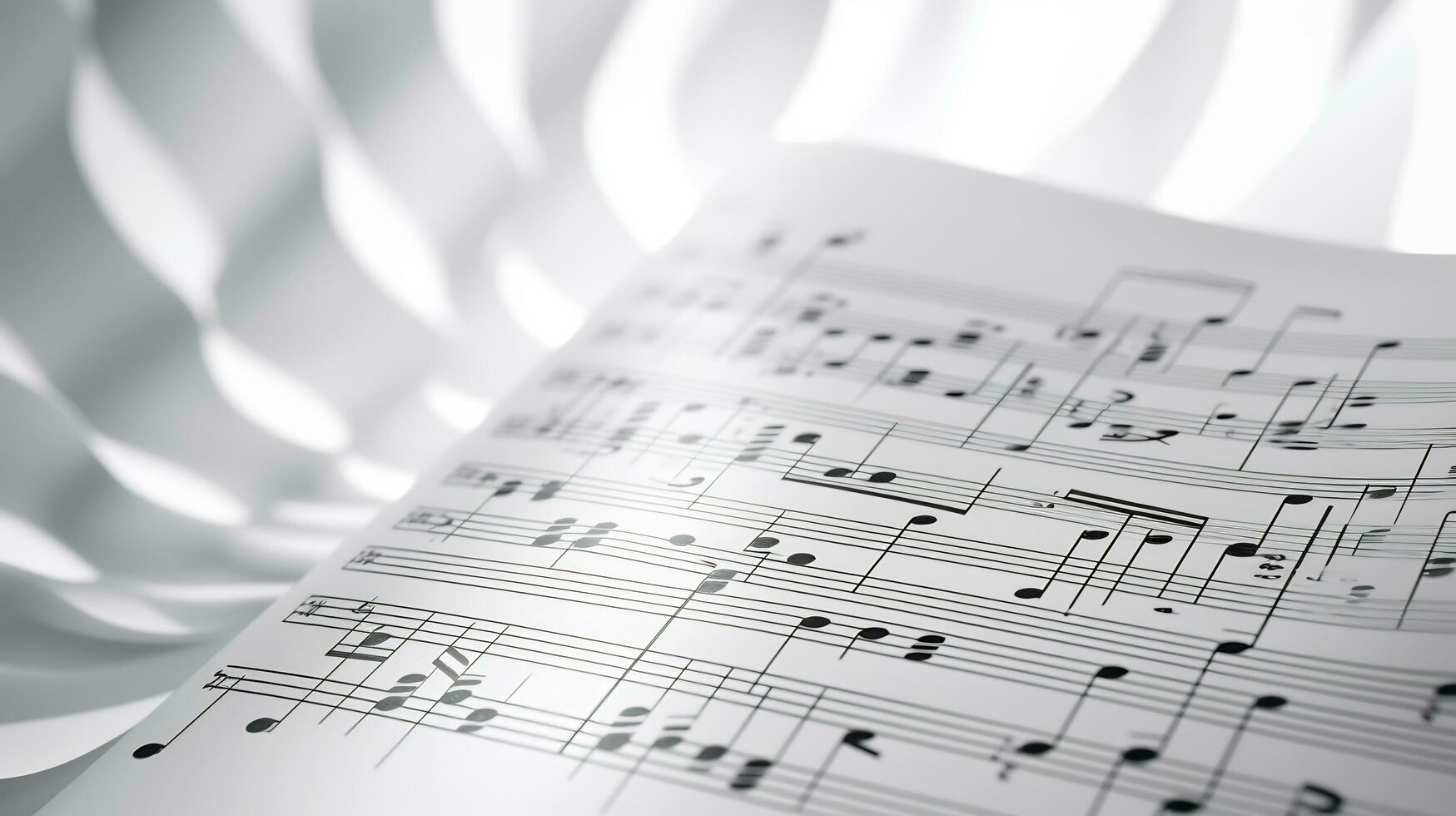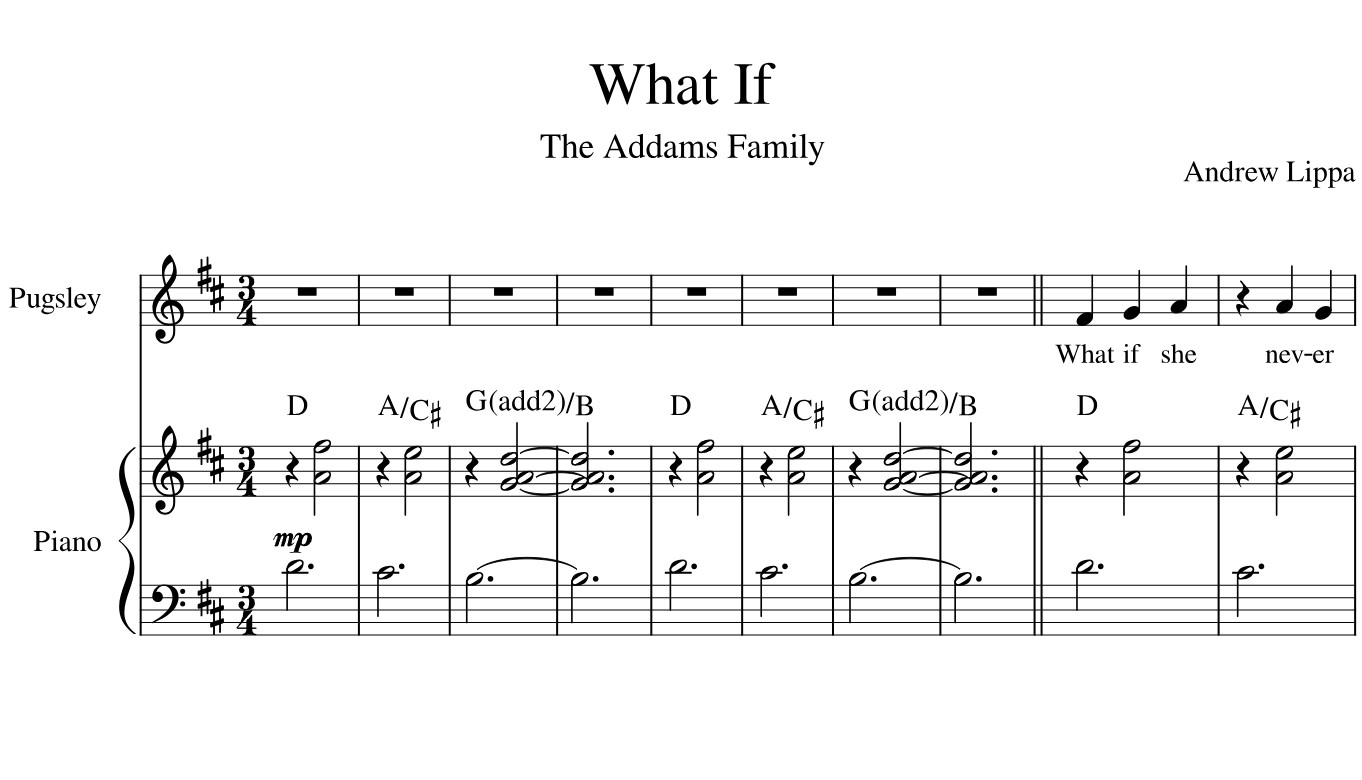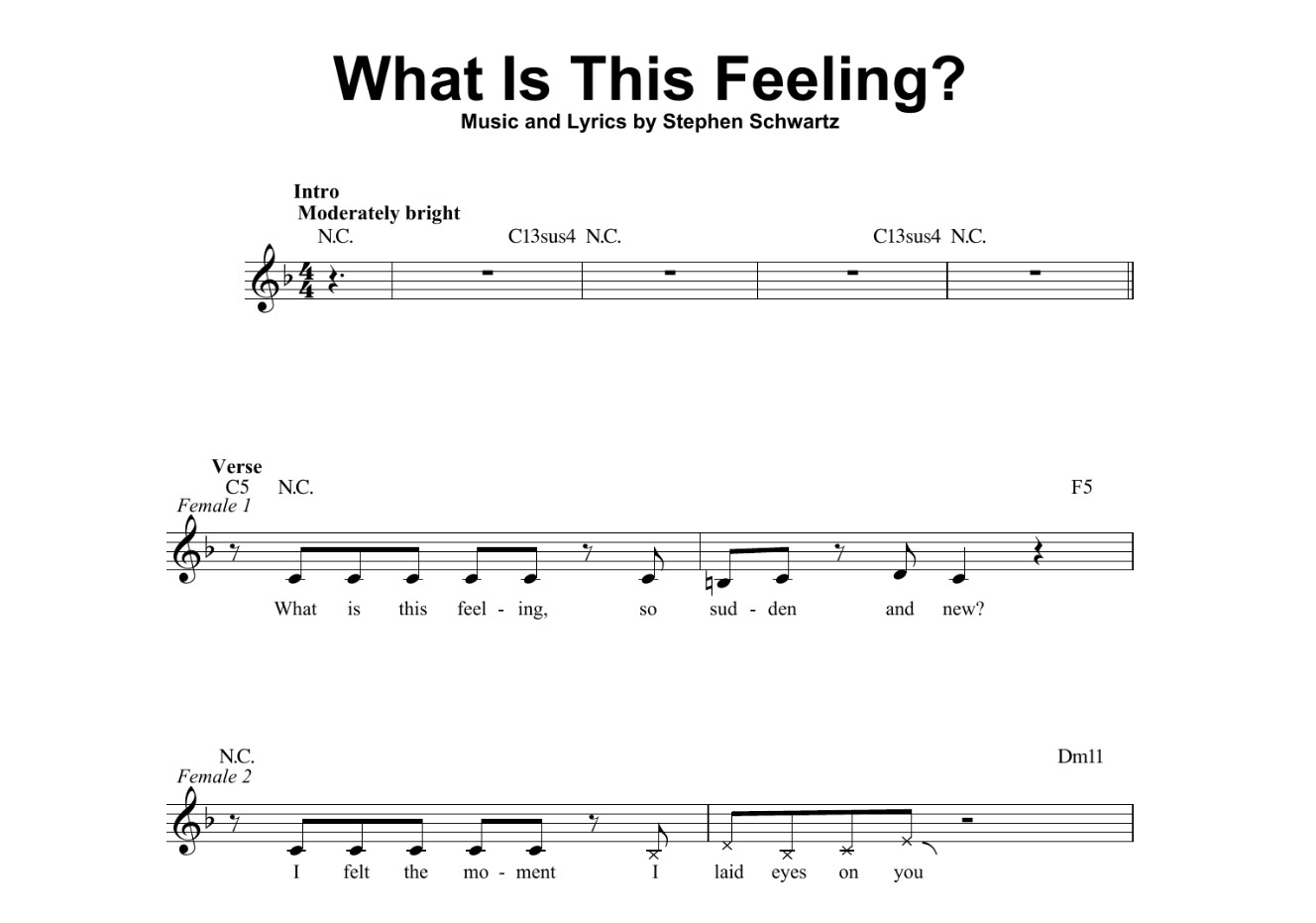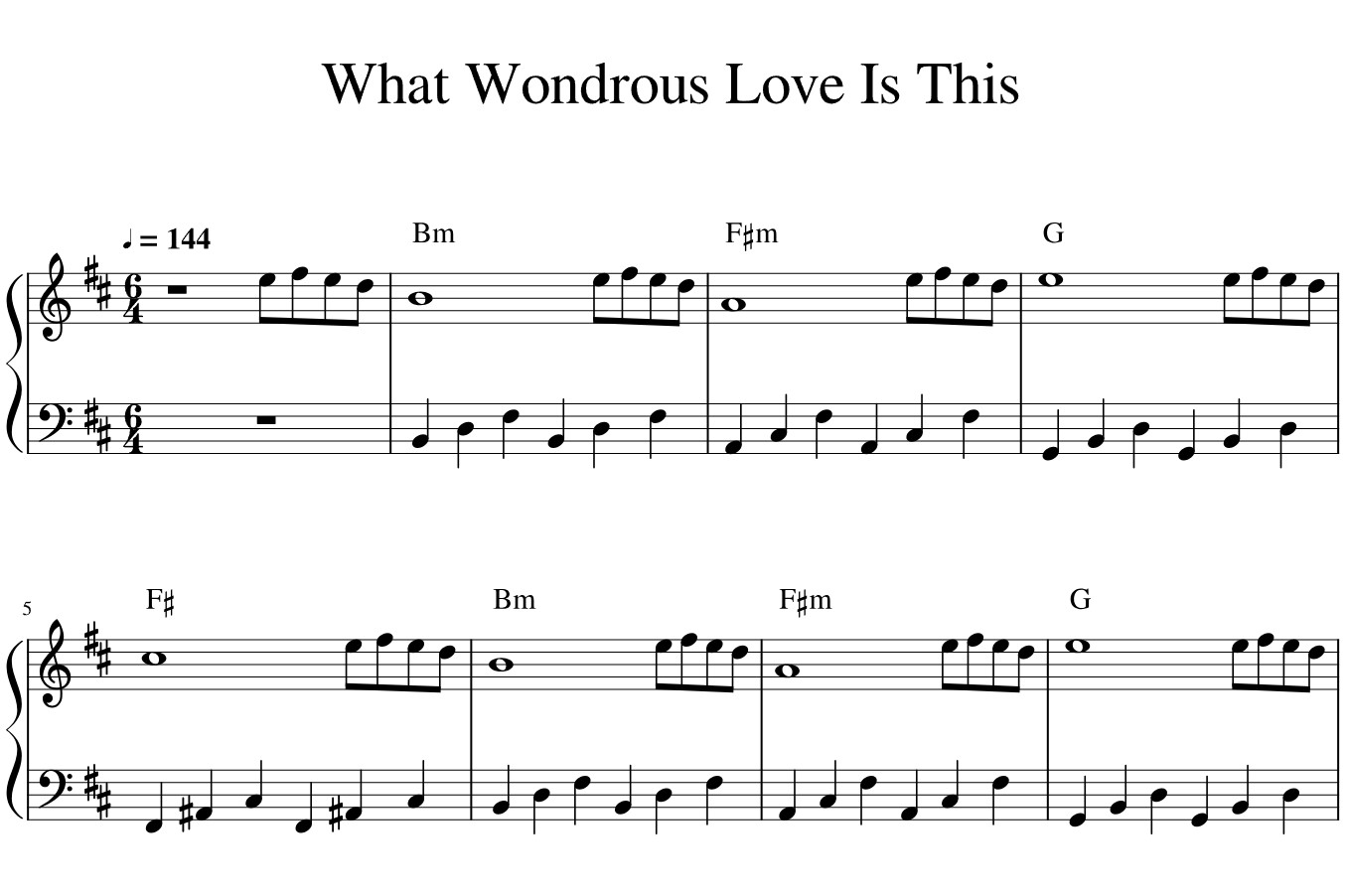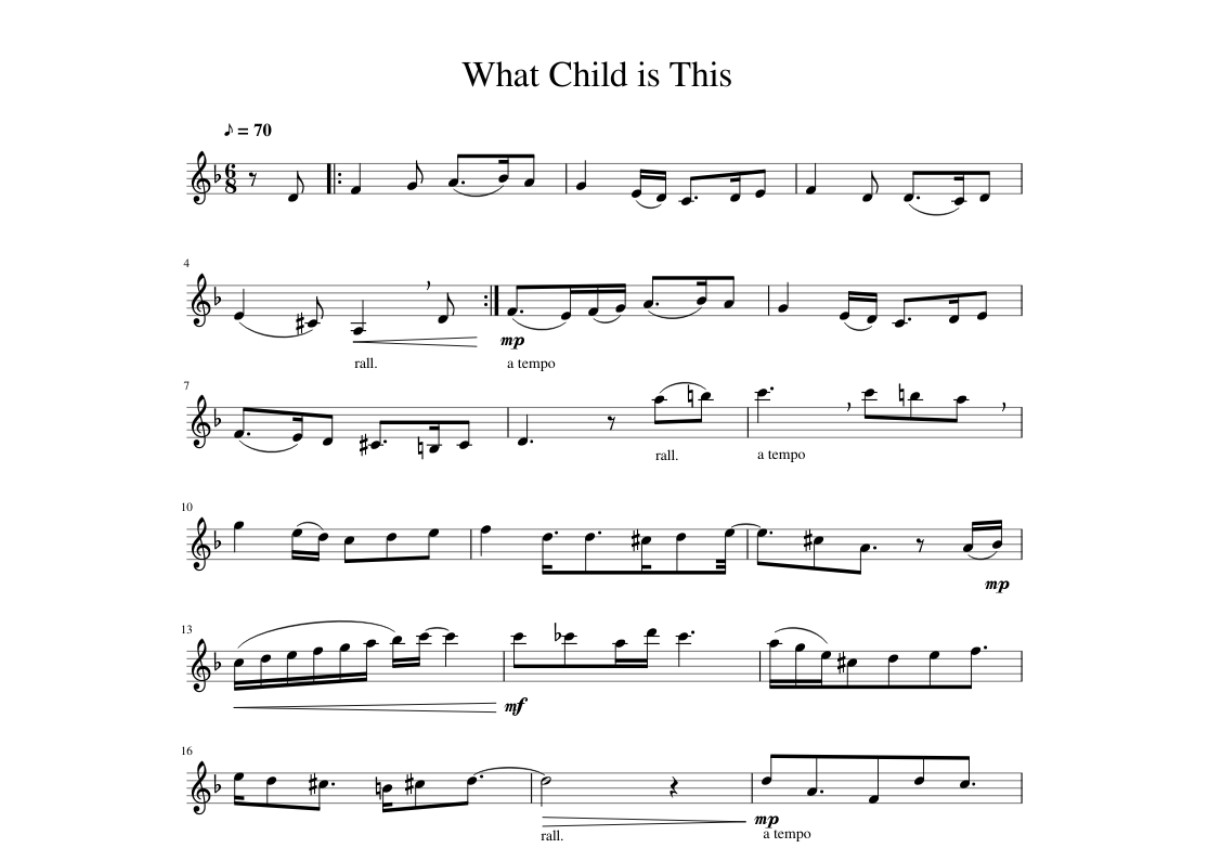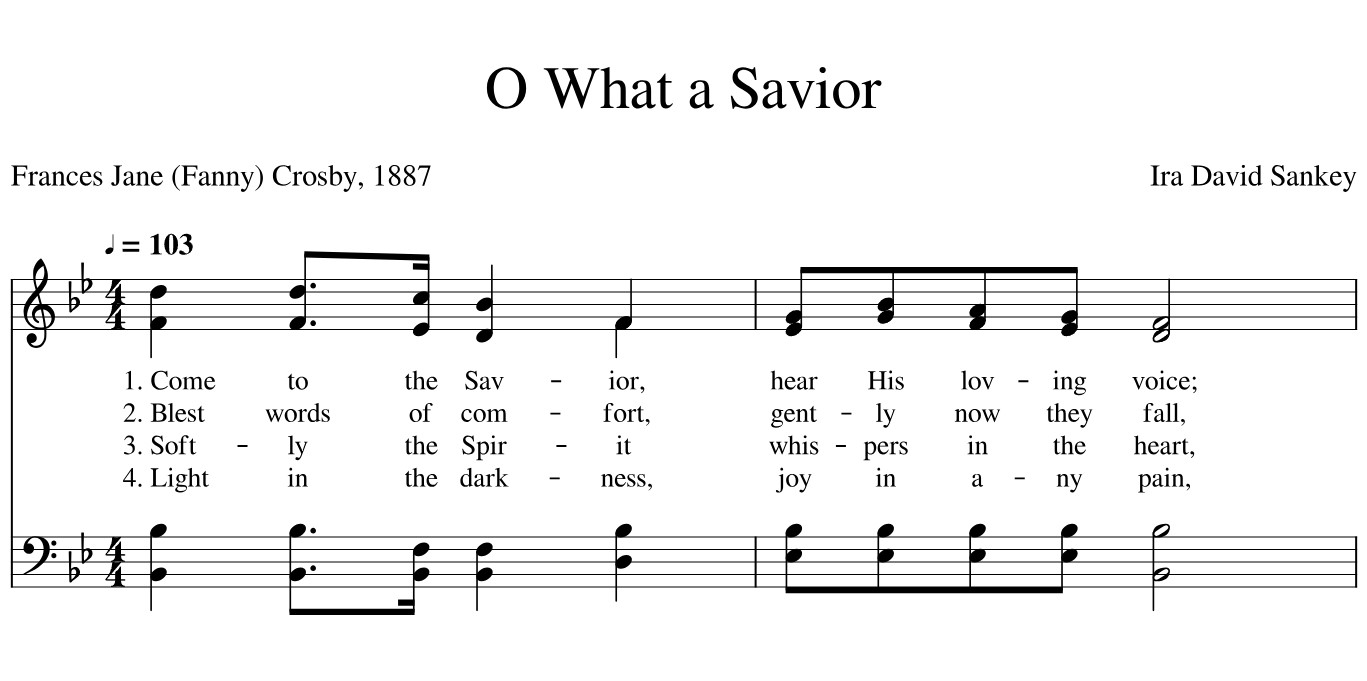Home>Production & Technology>Sheet Music>What Is Sheet Music?
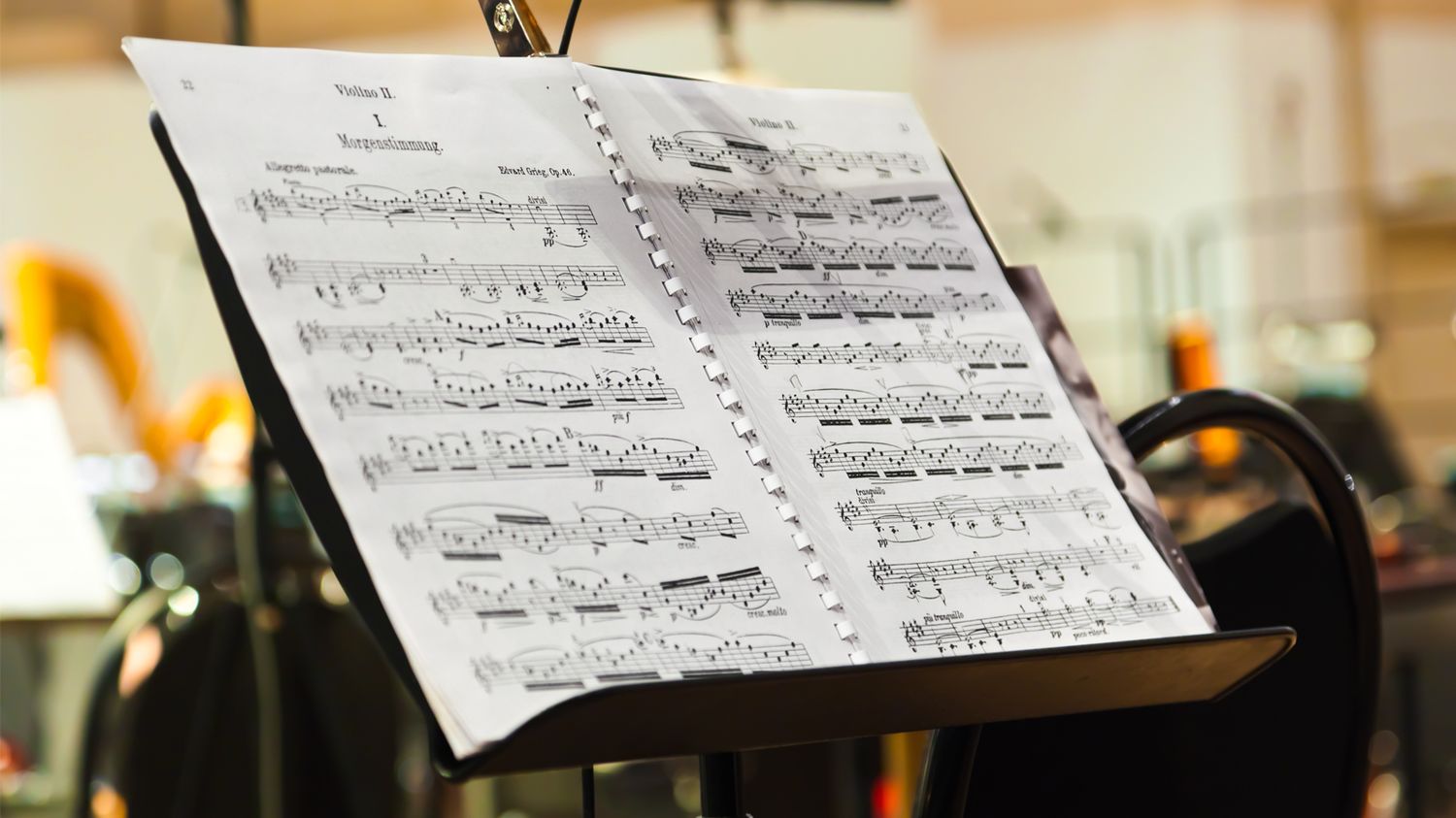

Sheet Music
What Is Sheet Music?
Modified: February 15, 2024
Discover what sheet music is and how it plays a crucial role in learning and playing instruments. Learn how to read sheet music and its importance in musical performances.
(Many of the links in this article redirect to a specific reviewed product. Your purchase of these products through affiliate links helps to generate commission for AudioLover.com, at no extra cost. Learn more)
Table of Contents
Introduction
Sheet music is a vital component of the music industry, serving as the blueprint for musicians to bring compositions to life through performance. It provides a visual representation of musical notes, melodies, and rhythms, allowing musicians to interpret and reproduce a wide range of music genres. Whether you’re a classically trained pianist, an aspiring singer-songwriter, or a member of a professional orchestra, understanding sheet music is essential to honing your musical skills and effectively communicating with fellow musicians.
While sheet music may seem intricate and complex at first glance, it serves as a universal language that musicians worldwide can decipher and understand. It allows musicians to convey their musical ideas, allowing for collaboration, performance, and the preservation of musical traditions.
Throughout history, sheet music has evolved alongside various musical styles and technological advancements. From the handwritten manuscripts of the classical era to the digitized notation software used today, sheet music has adapted to meet the changing needs of musicians. In the modern age, sheet music has not only transitioned to digital formats but also become more accessible to a wider audience, thanks to the internet.
In this article, we will delve into the world of sheet music, exploring its definition, history, components, notation systems, types, and uses. We will also discuss how sheet music has adapted to the digital age, and its continued relevance in an ever-evolving musical landscape.
Definition of Sheet Music
Sheet music, also known as a music score, is a written or printed document that contains musical notation. It serves as a guide for musicians, conveying important information about melodies, harmonies, rhythms, and other musical elements. The music notation on the sheet music helps musicians accurately interpret and perform a composition, ensuring that the musical intentions of the composer are faithfully realized.
Sheet music typically includes staves, which are horizontal lines that represent different pitches, as well as notes, rests, and other symbols that indicate the duration and timing of each musical element. It also includes other markings, such as dynamics (indicating the volume of the music), articulations (indicating how each note should be played), and tempo indications (indicating the speed of the music).
Sheet music can be written for a single instrument or multiple instruments playing together in an ensemble. It can be composed for a variety of musical genres, including classical, jazz, pop, rock, and more. Additionally, sheet music can range from simple compositions with a few notes to complex and intricate arrangements.
In addition to the musical notation, sheet music often includes lyrics, chord symbols, and guitar tabs, depending on the type of composition and the intended audience. This additional information helps vocalists and guitarists interpret the music and perform it accurately.
Sheet music serves as a valuable resource for musicians of all levels and backgrounds. It allows musicians to learn new music, practice their instrument, and perform with other musicians. It also serves as a record of musical compositions, preserving them for future generations to study and appreciate.
Overall, sheet music is an essential tool for musicians, providing a visual representation of music that allows for accurate interpretation and performance. It acts as a bridge between the composer’s creative ideas and the musicians’ ability to bring those ideas to life.
History of Sheet Music
The history of sheet music can be traced back thousands of years, demonstrating the significance of written music throughout human civilization. While early forms of musical notation can be found in ancient cultures, such as the Greeks and the Egyptians, the standardization and widespread use of sheet music began during the Middle Ages.
During the Middle Ages, music notation was primarily monophonic, with Gregorian chants being the dominant form of musical expression. These chants were written using neumes, which were symbols placed above the text to indicate the rise and fall of the melody. However, the lack of a precise system for indicating the exact pitch and duration of notes made these early forms of notation somewhat ambiguous.
It wasn’t until the 9th century that a more advanced system of music notation emerged. Guido d’Arezzo, an Italian monk, developed a system known as “solmization” or “solfege.” This system utilized a series of syllables to represent each note of the scale, and it provided a more precise means of indicating pitch. Guido’s system revolutionized music education and allowed for more accurate transcription of melodies.
Over time, the development of music notation continued to evolve, leading to the adoption of staff lines and the use of clefs to indicate specific pitch ranges. By the Renaissance period, sheet music had become a crucial tool for the dissemination of music. Composers such as Palestrina, Josquin des Prez, and Monteverdi began writing complex polyphonic compositions, and the demand for sheet music grew.
In the 17th and 18th centuries, the popularity of printed sheet music soared. Advancements in printing technology, such as movable type and copperplate engraving, made it easier and more cost-effective to produce sheet music on a larger scale. This led to an explosion of sheet music publications, allowing more people to access and perform music.
The 19th century witnessed significant developments in sheet music production and distribution. The advent of lithography made it possible to print sheet music with intricate illustrations and cover art, making it more visually appealing. The rise of music publishing houses, such as Peters, Schott, and Breitkopf & Härtel, allowed for greater dissemination of musical works.
The 20th century marked a new era for sheet music with the invention of sound recording and radio. While the popularity of recorded music grew, sheet music still played a significant role. It allowed musicians to learn and perform popular songs, enabling them to recreate the sound and style of their favorite recordings.
Today, sheet music continues to evolve alongside technological advancements. Digital sheet music has become increasingly popular, allowing musicians to access and download sheet music instantly. Online platforms provide a vast library of sheet music, catering to musicians of all genres, skill levels, and instruments. Despite these digital innovations, the tangible nature of traditional sheet music remains cherished by many musicians.
The history of sheet music reflects the enduring importance of written music as a means of communication, education, and artistic expression. It is a testament to the human desire to create, preserve, and share music across generations.
Elements of Sheet Music
Sheet music consists of various elements that work together to convey musical information to musicians. Understanding these elements is essential for accurately interpreting and performing a musical composition. Here are some key elements found in sheet music:
- Staff: The staff is a set of five horizontal lines and four spaces on which the musical notation is placed. Each line and space represents a different pitch.
- Clef: Clefs are symbols placed at the beginning of the staff to indicate the pitch range of the music. The most common clefs are the treble clef (used for higher-pitched instruments like the violin or flute) and the bass clef (used for lower-pitched instruments like the cello or tuba).
- Notes: Notes are the graphical representations of musical pitches on the staff. They are indicated by the shape of the oval and the position on the staff. Higher notes are placed on higher lines and spaces, and lower notes are placed on lower lines and spaces.
- Rests: Rests indicate moments of silence in the music. They are represented by symbols that correspond to the duration of the silence. Rests help musicians keep track of beats and maintain the rhythm of the composition.
- Time Signature: The time signature is a numerical symbol written at the beginning of a musical piece. It indicates the number of beats in each measure and the type of note that receives one beat. Common time signatures include 4/4, 3/4, and 6/8.
- Key Signature: The key signature is a set of sharps or flats placed at the beginning of a staff. It indicates the tonal center or key of the music. Key signatures help musicians determine the notes that should be altered throughout the composition.
- Dynamics: Dynamics indicate the volume or intensity of the music. They are indicated by symbols such as “p” for piano (soft), “f” for forte (loud), and crescendos or decrescendos to indicate gradual changes in volume.
- Articulations: Articulations indicate how each note should be played in terms of duration and emphasis. They include symbols such as staccato dots (short and detached), slurs (smooth and connected), and accents (emphasis on a note).
- Tempo Markings: Tempo markings indicate the speed at which the music should be played. Common tempo markings include “adagio” (slow), “allegro” (fast), and “moderato” (moderate).
- Repeats: Repeats are symbols that indicate sections of music that should be repeated. They help conserve space on the page and allow for easy navigation within a composition.
These elements, combined with musical notation, provide a comprehensive system for communicating and interpreting music from the composer to the performer. They serve as a guide for musicians to accurately reproduce a composition and convey the intended musical expression.
Notation Systems
Notation systems are the standardized methods used to represent and communicate musical ideas and compositions on sheet music. Throughout history, various notation systems have been developed, each with its own unique symbols and conventions. Here are some of the most commonly used notation systems:
- Western (Staff) Notation: Western notation, also known as staff notation, is the most widespread notation system in use today. It utilizes a set of five horizontal lines (staff) and various symbols to represent pitch, rhythm, and other musical elements. Western notation is highly precise and allows for detailed notation of complex musical compositions.
- Tablature Notation: Tablature notation is primarily used for stringed instruments like the guitar, bass, and ukulele. Instead of using note symbols on a staff, tablature notation uses numbers and symbols to indicate which strings to play and frets to press. This system is beneficial for beginner musicians and for capturing specific finger positions on the instrument.
- Chord Charts: Chord charts are simplified forms of notation commonly used in popular music genres. They include the lyrics of the song and chord symbols above the lyrics to indicate the harmony. Chord charts are a quick reference for musicians to play songs in a chordal or accompaniment style.
- Percussion Notation: Percussion notation is specifically developed for percussion instruments. It uses specific symbols to represent various drum and percussion sounds, such as cymbals, snare drums, and timpani. Percussion notation includes indications for different techniques, such as rim shots, rolls, and mallet choices.
- Figured Bass: Figured bass notation is associated with Baroque music and is primarily used by keyboard players and basso continuo performers. It consists of numbers written beneath the bass line to indicate the harmony and the intervals to be played above the bass note.
- Mensural Notation: Mensural notation was used during the Renaissance and early Baroque periods and was characterized by its use of distinct note shapes and rhythmic values. This system was more flexible than modern notation in terms of rhythm, with notes having flexible durations within specific rhythmic frameworks.
These notation systems cater to different instruments, genres, and historical periods, providing musicians with the tools to accurately interpret and perform music written in various styles. While Western notation remains the most prevalent system, understanding different notation systems enhances musicians’ versatility and allows for the exploration of diverse musical traditions.
Types of Sheet Music
Sheet music encompasses a wide range of musical compositions, catering to the diverse preferences of musicians and audiences. Here are some common types of sheet music:
- Classical Sheet Music: Classical sheet music refers to compositions from the classical music period, typically written by renowned composers such as Bach, Mozart, Beethoven, and Chopin. This type of sheet music often features complex musical structures and notation.
- Popular Sheet Music: Popular sheet music includes arrangements of songs from various genres, including pop, rock, jazz, Broadway, and film scores. It allows musicians to play recognizable melodies and chords from well-known songs.
- Folk Sheet Music: Folk sheet music comprises traditional songs and melodies from different cultures and regions. It often includes arrangements for solo instruments or small ensembles, capturing the essence of folk music traditions.
- Jazz Sheet Music: Jazz sheet music encompasses compositions for various jazz styles, such as swing, bebop, and fusion. It includes lead sheets, which provide the melody, chords, and basic structure for improvisation.
- Choral Sheet Music: Choral sheet music is written for vocal ensembles, including choirs and vocal groups. It features multiple vocal parts (soprano, alto, tenor, bass) and often includes lyrics and translations.
- Orchestral Sheet Music: Orchestral sheet music is scored for symphony orchestras and includes compositions for string, brass, woodwind, and percussion instruments. It provides individual parts for each instrument and a full score for the conductor.
- Instrumental Sheet Music: Instrumental sheet music is written for specific instruments, such as piano, guitar, violin, or flute. It may consist of solo compositions, études, exercises, and arrangements for various skill levels.
- Movie and TV Sheet Music: Movie and TV sheet music features music from films, television shows, and video games. It allows musicians to recreate the soundtracks they enjoy and immerse themselves in the musical world of their favorite media.
- Holiday and Seasonal Sheet Music: Holiday and seasonal sheet music includes compositions specifically associated with holidays like Christmas, Easter, Halloween, or patriotic celebrations. It encompasses a mix of traditional and contemporary pieces.
- Educational Sheet Music: Educational sheet music is specifically designed to assist beginners and students in their musical development. It includes method books, exercises, and simplified arrangements to facilitate learning and technique building.
These various types of sheet music cater to musicians of all genres and skill levels, allowing for a diverse range of musical experiences. Whether you’re a classical virtuoso, an aspiring jazz musician, or a beginner looking to learn your favorite pop songs, there is sheet music available to suit your musical interests and goals.
Uses of Sheet Music
Sheet music serves a multitude of purposes and plays a vital role in the world of music. Here are some key uses of sheet music:
- Performance: Sheet music is essential for musicians to accurately perform a composition. It provides a roadmap of the musical elements and instructions that guide the interpretation of the piece. Musicians from solo performers to orchestras rely on sheet music to ensure unity and precision in their performances.
- Learning and Practice: Sheet music is a valuable learning tool, enabling musicians to study new pieces and expand their repertoire. It allows musicians to analyze the composition’s structure, interpret the nuances of the music, and develop their technical skills. Additionally, sheet music provides a basis for focused practicing and improving musical abilities.
- Communication: Sheet music serves as a universal language for musicians, facilitating communication and collaboration. It allows musicians from different backgrounds and skill levels to come together and perform collectively. Through sheet music, musical ideas can be shared, understood, and executed by multiple musicians.
- Preservation of Musical Works: Sheet music acts as a means of preserving musical compositions. It captures the creative output of composers, ensuring their works can be studied, performed, and appreciated by future generations. Sheet music serves as a historical record, preserving the cultural heritage of various musical styles and movements.
- Teaching and Education: Sheet music plays a crucial role in music education. It provides a structured resource for teachers to guide their students in learning new techniques, exploring different musical styles, and understanding musical theory. Sheet music helps students develop their reading skills, musical knowledge, and interpretative abilities.
- Arrangement and Adaptation: Sheet music allows for the arrangement and adaptation of existing compositions. Musicians can modify and personalize a piece to suit their performance style or ensemble, adding their creative touch to the music. Sheet music provides a foundation from which musicians can expand and reimagine a composition.
- Recreation and Enjoyment: Sheet music enables musicians and music enthusiasts to recreate the sounds of their favorite songs or compositions. It allows individuals to play familiar melodies and immerse themselves in the joy of making music. Sheet music provides a source of entertainment and enjoyment for musicians of all skill levels.
Overall, sheet music serves as a fundamental tool for musicians, supporting performance, learning, communication, and preservation of musical works. It embodies the connection between the composer’s creative vision and the musician’s ability to bring that vision to life.
Sheet Music in the Digital Age
The digital age has brought significant changes to the way sheet music is created, distributed, and accessed. With the advent of technology, sheet music has become more accessible, versatile, and interactive. Here are some key developments in sheet music in the digital age:
Online Platforms and Digital Libraries: The internet has transformed the availability of sheet music. Online platforms and digital libraries offer vast collections of sheet music, encompassing various genres, instruments, and skill levels. Musicians can easily search, preview, and purchase sheet music online, expanding their repertoire and exploring new compositions.
Digitization and Scanning: Many historic sheet music collections have been digitized, preserving and making them accessible to a wider audience. This allows musicians and researchers to study and explore rare or out-of-print compositions that were previously difficult to obtain.
Interactive and Multimedia Features: Digital sheet music often includes interactive features, such as audio playback, tempo adjustment, and highlighting of notes while playing. This enhances the learning experience and allows musicians to practice along with the sheet music. Some platforms even include video tutorials to guide musicians in learning a piece.
Collaborative Tools: Digital sheet music platforms facilitate collaboration among musicians. Musicians can share sheet music with others, collaborate on compositions, and perform together virtually, transcending geographical limitations. This has opened up new opportunities for collective creativity and musical collaboration.
Mobile Apps and E-Readers: Mobile apps and e-readers have made it easier for musicians to carry their sheet music in a portable and compact form. Musicians can access their entire sheet music library on their smartphones, tablets, or dedicated e-readers, eliminating the need for physical copies and reducing clutter.
Sheet Music Notation Software: Notation software, such as Sibelius and Finale, has revolutionized the way sheet music is created and edited. Composers and arrangers can compose music directly in these software programs, streamlining the notation process and providing greater flexibility for revision and customization.
Environmental Sustainability: With the transition to digital sheet music, the demand for physical paper copies has decreased, leading to a positive environmental impact. Digital sheet music reduces paper waste and contributes to a more sustainable and eco-friendly approach to music consumption.
Global Access and Reach: Digital sheet music has transcended geographical boundaries, allowing musicians from all corners of the world to access and engage with a vast repertoire of music. This global accessibility promotes cultural exchange, diverse musical influences, and the enrichment of musical traditions.
The digital age has brought about significant advancements in sheet music, making it more accessible, interactive, and environmentally sustainable. These developments have expanded the possibilities for musicians, educators, and enthusiasts alike, fostering innovation, collaboration, and a deeper appreciation for the art of sheet music.
Conclusion
Sheet music is a cornerstone of the music industry, providing musicians with a tangible representation of musical compositions. From its early origins to the digital age, sheet music has evolved to meet the changing needs of musicians and the advancements in technology. It serves as a universal language that transcends cultural and language barriers, allowing musicians to communicate, collaborate, and preserve musical traditions.
Understanding sheet music is essential for musicians of all skill levels, as it provides a roadmap for musical interpretation and performance. Whether it’s classical, popular, folk, jazz, or any other genre, sheet music acts as a guide, helping musicians accurately interpret melodies, rhythms, and other musical elements.
In the digital age, sheet music has become more accessible and versatile. Online platforms and digital libraries offer a vast collection of sheet music, and digitization has made historic compositions easily available. Interactive features, collaborative tools, and mobile apps have revolutionized the way musicians learn, practice, and perform with sheet music.
Despite the digital advancements, traditional sheet music continues to be cherished by many musicians. The tactile experience and historical significance of physical sheet music still hold value, preserving the artistry and craftsmanship of written music.
In conclusion, sheet music is not only a practical tool for musicians but also a cultural document that connects generations, fosters creativity, and facilitates the expression of human emotions. Whether in the form of printed notation or digital files, sheet music serves as a vital resource for musicians, educators, and music enthusiasts worldwide, ensuring the preservation and perpetuation of the rich tapestry of musical expression.



